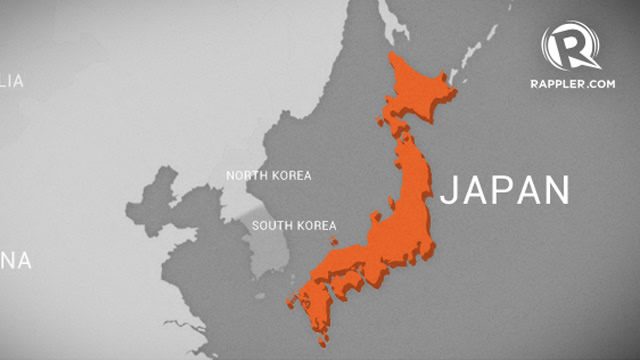SUMMARY
This is AI generated summarization, which may have errors. For context, always refer to the full article.

TOKYO, Japan (3rd UPDATE) – A powerful 6.5-magnitude earthquake hit Japan’s southwestern island of Kyushu on Thursday, April 14, collapsing homes,sparking fires and leaving 3 people dead, media and government said, as officials scrambled to assess the extent of the damage.
At least 12 people were injured and 19 houses collapsed in Kumamoto prefecture on Kyushu, Chief Cabinet Secretary Yoshihide Suga, the government’s top spokesman, announced, adding that 350 military personnel had been dispatched for rescue work.
Broadcaster NHK reported that 3 people were killed, though there was no official confirmation, adding more may be trapped in rubble.
Bullet train services were halted on the island, media said.
Hours later a another powerful quake measuring magnitude 6.4 hit the same region just after midnight local time on Friday, according to the Japan Meteorological Agency.
The initial quake was the first of more than a dozen to rock the region in one of the most earthquake prone countries in the world.
Prime Minister Shinzo Abe convened an emergency response meeting of emergency officials at his office to plot a response.
Cameras showed violent shaking in the city of Kumamoto at the time of the first earthquake, which was felt throughout Kyushu.
Japan’s two sole operating nuclear reactors, located on Kyushu, were functioning normally, an official at the Sendai plant operated by Kyushu Electric Power told AFP, though he said technicians were checking for damage.
“We are doing our best for emergency disaster measures by prioritizing efforts to save and rescue victims,” Suga said.
“I ask people in the disaster zone to act calmly and help each other.”
NHK reported that some buildings had collapsed in the town of Mashiki in Kumamoto with people possibly trapped underneath.
It showed a what appeared to be a house in flames as firefighters attempted to douse it with water. It reported a total of 3 fires sparked by the quakes.
Jiji reported that shinkansen – bullet train – services were halted on the island, while NHK said one of the trains had derailed though it was not carrying passengers at the time.
It was not clear if the train was travelling or stationary.
Highest level intensity
NHK also showed some damage including lumps of broken concrete on a street in Kumamoto. Residents stood outside making calls on mobile phones.
NHK showed residents taking refuge outside, saying that the quake’s shaking was intense and had caused some power outages.
The first quake struck at 9:26 pm (1226 GMT) in Kumamoto at a relatively shallow depth of 10 kilometers (6.2 miles), according to the Japan Meteorological Agency, which said there was no danger of a tsunami.
It was followed about 30 minutes later by a smaller one with a magnitude of 5.7, the agency said, counting about two dozen aftershocks in total.
The stronger quake was measured at 6.2 by the US Geological Survey, which put the second quake at 5.4. Another smaller aftershock followed.
Aftershocks were likely to continue for about a week, it said.
The quake also registered at the highest level of Japan’s seven-scale quake intensity system, which measures shaking on the ground.
A quake of that size can cause people to lurch about and furniture to shoot around a room.
Japan sits at the junction of 4 tectonic plates and experiences around 20% of the world’s most powerful earthquakes.
But rigid building codes and strict enforcement mean even powerful tremors frequently do limited damage.
A massive undersea quake that hit on March 11, 2011, sent a tsunami barrelling into Japan’s northeast coast, leaving about 18,500 people dead or missing, and sending several reactors into meltdown at the Fukushima nuclear plant in the worst atomic accident in a generation. – Shingo Ito, AFP/Rappler.com
Add a comment
How does this make you feel?
There are no comments yet. Add your comment to start the conversation.